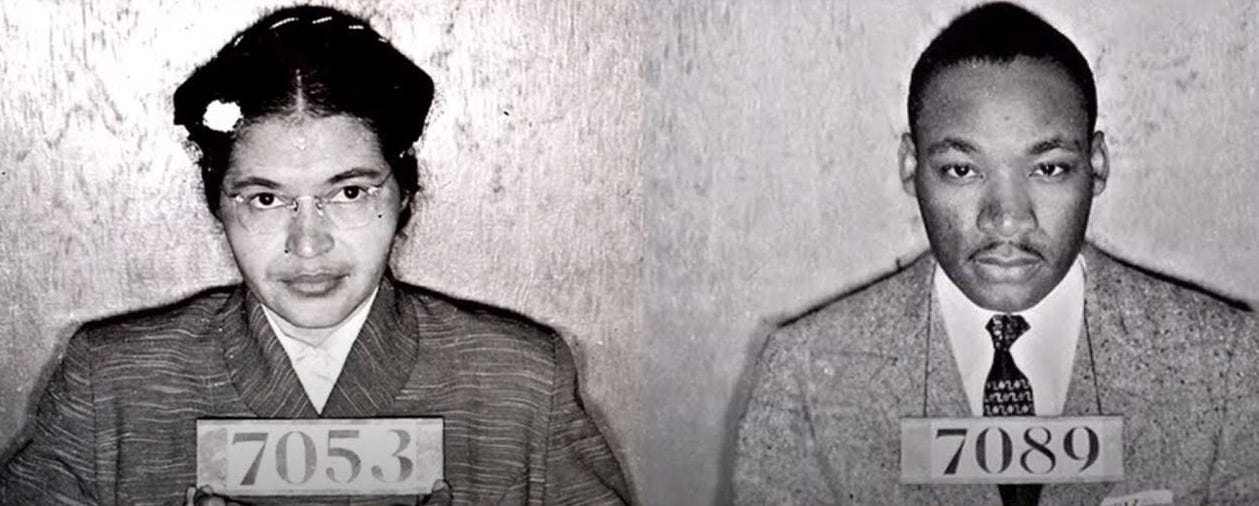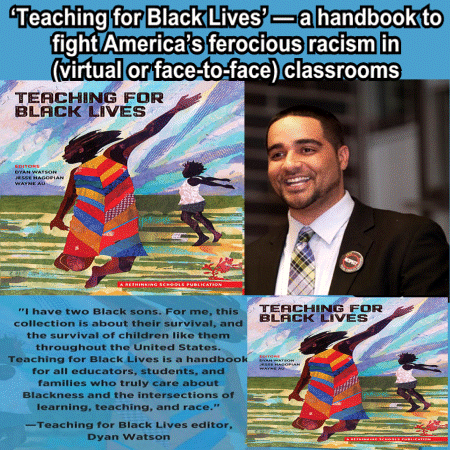‘Teaching for Black Lives’ — a handbook to fight America’s ferocious racism in (virtual or face-to-face) classrooms
This is how the introduction starts, as relevant today as ever:
Black students’ minds and bodies are under attack. Fifteen-year-old Black student Coby Burren was in geography class at Pearland High School near Houston in the fall of 2015. As he read the assigned page of his textbook, he noticed something that deeply disturbed him: A map of the United States with a caption that said the Atlantic slave trade brought “millions of workers from Africa to the southern United States to work on agricultural plantations.” Coby took a picture of his textbook and texted it to his mother, adding, “We was real hard workers wasn’t we,” along with a sarcastic emoji. Not only had the McGraw-Hill textbook replaced the word “slave” with “workers,” they also placed the chapter on the enslavement of Africans in the chapter of the book titled “Patterns of Immigration” — as if Africans came to the United States looking for a better life. …From the North to the South, corporate curriculum lies to our students, conceals pain and injustice, masks racism, and demeans our Black students. But it’s not only the curriculum that is traumatizing students.
Last week, a 42-year-old father of two named George Floyd died in Minneapolis, handcuffed, with his arms behind his back, on the ground, with an officer’s knee on his neck for nearly nine minutes, almost one-third of that time he was non-responsive, according to court documents. That officer has been charged with third-degree murder but three other officers with him — two of whom were also holding down Floyd — have not been charged.
Protests against police brutality and endemic racism have erupted in cities around the country, with some saboteurs breaking the peace of the demonstrations with violence. Police and the National Guard have flooded streets in a number of urban areas.
“Teaching for Black Lives,” edited by Dyan Watson, Jesse Hagopian and Wayne Au, is designed to show how educators “can and should make their classrooms and schools sites of resistance to white supremacy and anti-blackness, as well as sites for knowing the hope and beauty in blackness.” But the truth is that the book can educate anybody who picks it up and reads it.
Here, with permission, is the introduction to “Teaching for Black Lives” and two chapters from the book.
Watson, social studies coordinator for the secondary program in teacher education at Lewis & Clark College, is an editor at Rethinking Schools, a national publisher of educational materials. She is also a member of the organization’s executive board. She began her professional career as a GED instructor for young mothers in Portland and then taught social studies at Sunset High School in Beaverton, Ore., where she developed and taught the first African-American history course and helped create and implement a school-within-a-school program for freshmen and sophomores. Watson is also CONTINUE READING: ‘Teaching for Black Lives’ -- a handbook for educators to fight racism - The Washington Post
A quick lesson on what MLK and Rosa Parks said about protests - The Washington Post - https://www.washingtonpost.com/education/2020/06/01/quick-lesson-what-mlk-rosa-parks-really-said-about-protests/


